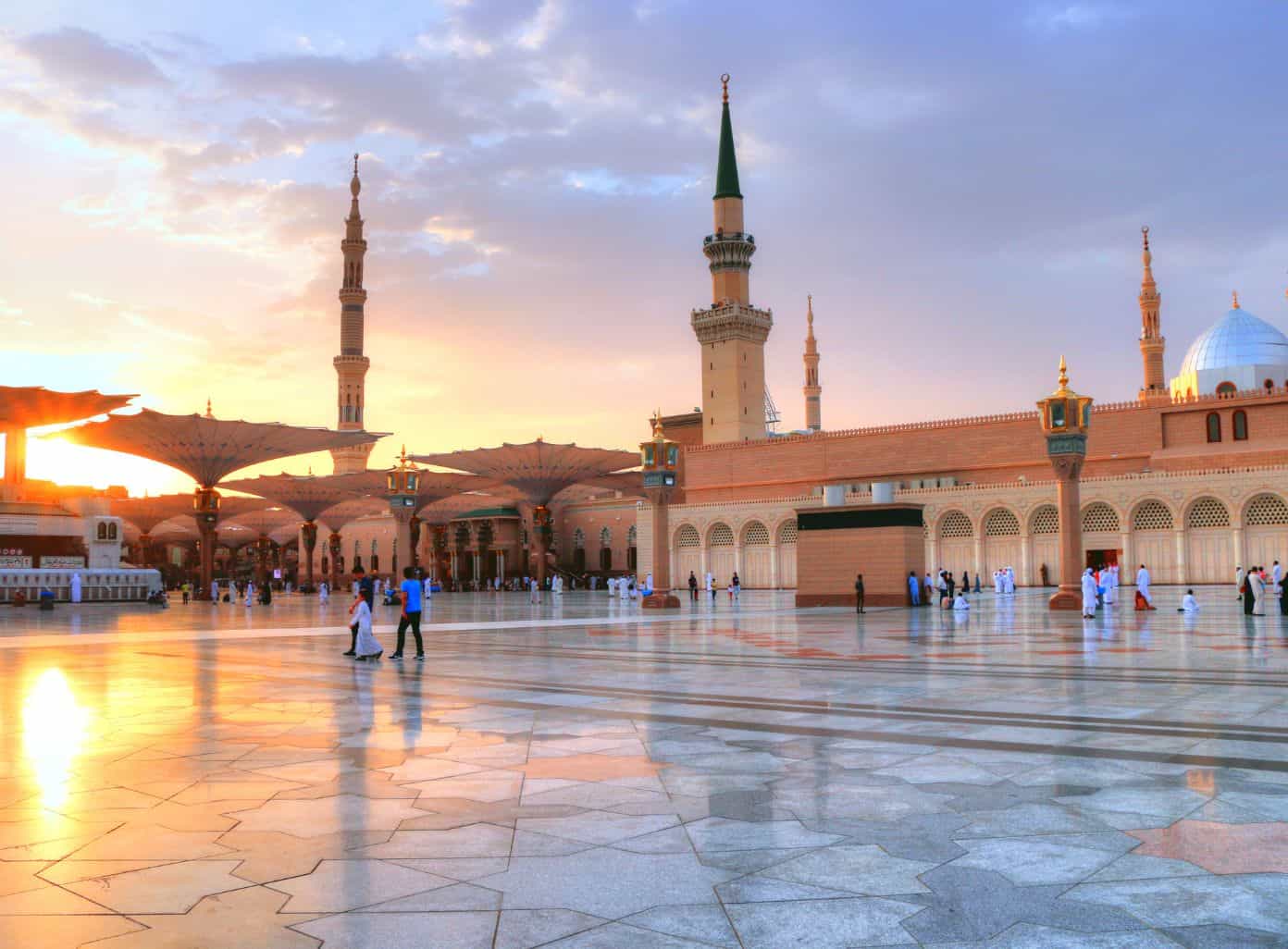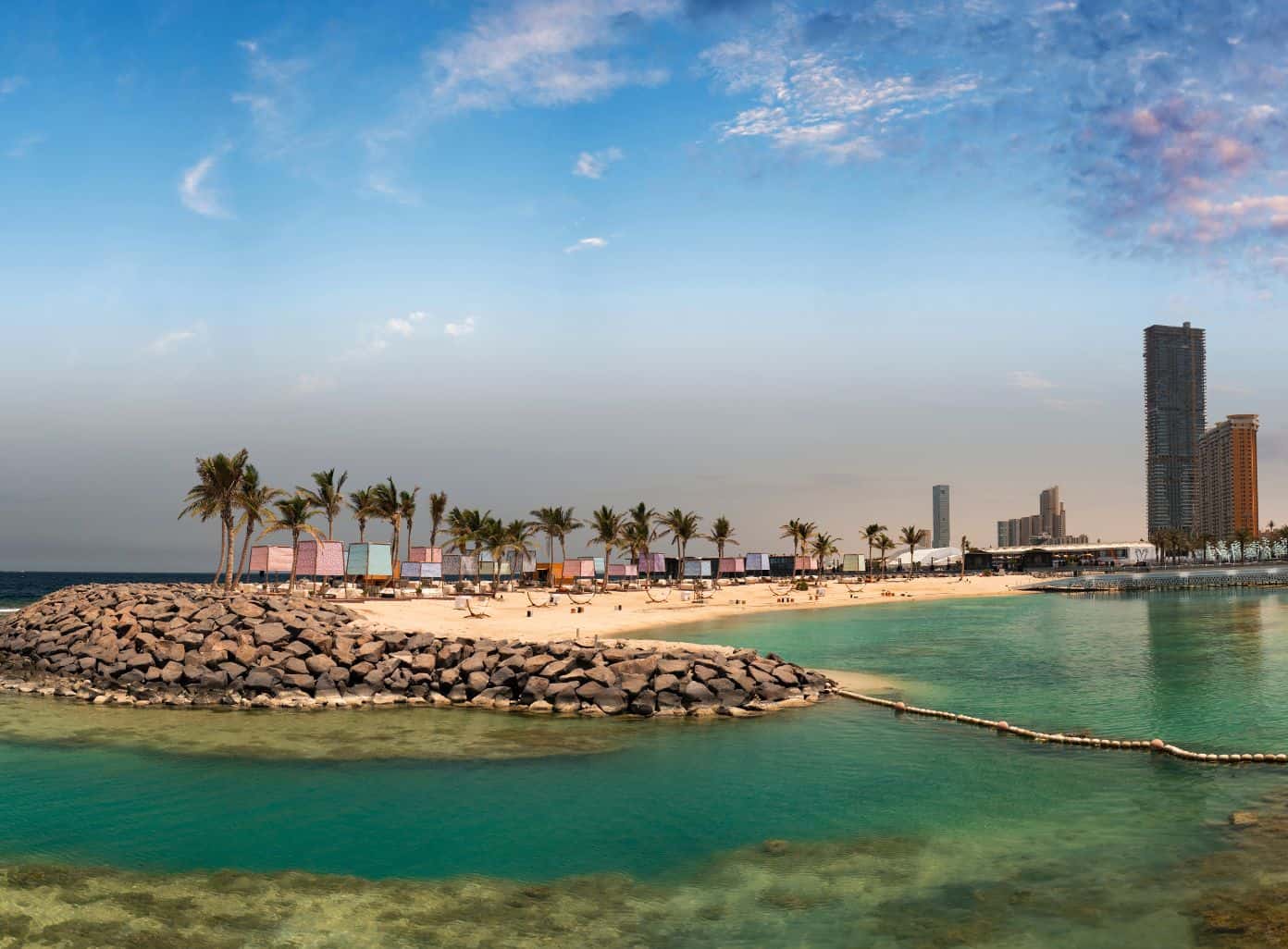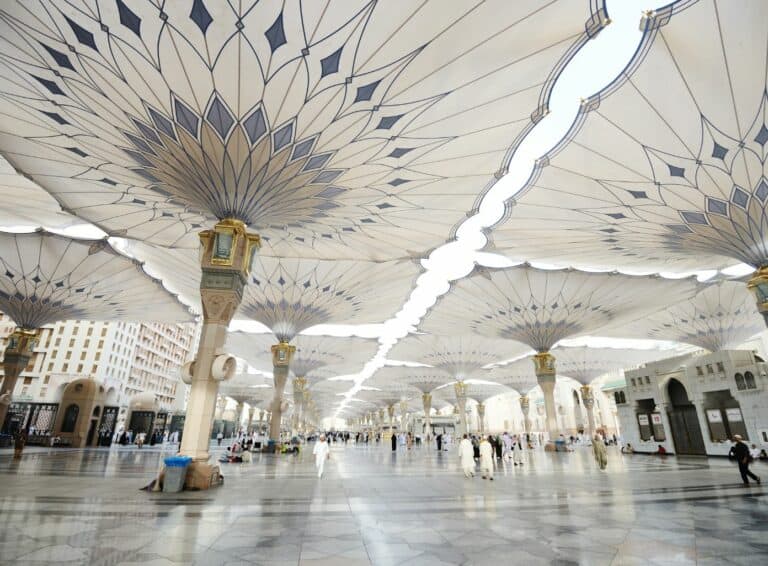Unveiling Saudi Arabia’s Holy Cities
Introduction to Saudi Arabia’s Holy Cities
Saudi Arabia is home to two of the most revered cities in the Islamic world: Mecca and Medina. These cities hold immense religious significance for Muslims around the globe. Millions of Muslims flock to these holy cities every year to fulfill their religious duties and experience the spiritual essence that permeates the air.

Importance and Significance of the Holy Cities
Mecca and Medina hold a special place in the hearts of Muslims worldwide. Mecca, known as the holiest city, is the birthplace of the Prophet Muhammad and the site of the Kaaba, the most sacred site in Islam. Muslims face towards the Kaaba during their daily prayers, symbolizing the unity and oneness of the Muslim community.
Medina, often referred to as the City of the Prophet, holds historical significance as the city where the Prophet Muhammad migrated to and established the first Islamic state. The Prophet’s Mosque, located in Medina, is a place of profound reverence for Muslims. It houses the tomb of the Prophet Muhammad and is a destination for pilgrims seeking to pay their respects and offer prayers.
The pilgrimage to Mecca, known as the Hajj, is considered the fifth pillar of Islam and is an obligation for every able-bodied and financially capable Muslim at least once in their lifetime. The Hajj is an extraordinary journey that encompasses a series of rituals and practices, culminating in a spiritual transformation for the pilgrim.
In addition to the Hajj, many Muslims also undertake the Umrah, which is a lesser pilgrimage that can be performed at any time of the year. The Umrah involves a shorter set of rituals compared to the Hajj but still holds great spiritual significance.
Visiting the holy cities of Mecca and Medina is a deeply enriching experience for Muslims. It allows them to connect with their faith, seek forgiveness, and forge a closer relationship with Allah. These cities are not only significant in religious terms but also hold a rich historical and cultural heritage.
As you embark on your sacred voyage to Saudi Arabia’s holy cities, it’s essential to familiarize yourself with the dress code, etiquette, and practical considerations for travelers. These factors contribute to a respectful and fulfilling experience during your visit. For more information on these aspects, refer to our article on Saudi Arabia’s travel guide.
Whether you are planning to embark on the Hajj, Umrah, or simply wish to learn more about the profound importance of these holy cities, exploring Mecca and Medina will undoubtedly deepen your understanding of Islam and leave an indelible mark on your spiritual journey.

Mecca: The Holiest City
Mecca, the holiest city in Islam, holds immense significance for Muslims around the world. It is the birthplace of the Prophet Muhammad and the location of the Kaaba and the Grand Mosque.
The Kaaba and the Grand Mosque
At the heart of Mecca lies the Kaaba, a sacred structure believed to have been built by the Prophet Ibrahim (Abraham) and his son Ismail (Ishmael). The Kaaba is a cube-shaped building draped in a black cloth known as the Kiswa. It serves as the focal point for Muslims during their prayers, regardless of their geographic location.
Surrounding the Kaaba is the magnificent Grand Mosque, also known as Al-Masjid al-Haram. It is the largest mosque in the world and can accommodate millions of worshippers during the annual Hajj pilgrimage. The Grand Mosque features intricate architecture, including minarets, marble floors, and the famous Black Stone embedded in one of its corners.
Rituals and Practices in Mecca
Muslims who visit Mecca engage in a variety of rituals and practices. One of the most important rituals is the Tawaf, which involves circling the Kaaba seven times in a counterclockwise direction. This ritual signifies the unity of Muslims and their devotion to Allah.
Another significant practice is the Sa’i, which entails briskly walking or jogging between the hills of Safa and Marwa, following in the footsteps of Hajar (Hagar), the wife of Ibrahim. This reenacts her search for water when she was left in the desert with her infant son, Ismail.
Visitors to Mecca also partake in the Ihram, a state of ritual purity that involves wearing specific garments and following certain restrictions. Men wear two seamless white cloths, while women adhere to modest dress code guidelines that cover their bodies but allow their faces and hands to be visible.
In addition to these rituals, Mecca offers a profound spiritual experience for Muslims. It is a place where pilgrims connect with their faith, seek forgiveness, and find solace in the company of fellow worshippers. The city’s historical and cultural significance adds to the awe-inspiring atmosphere that surrounds the Holy Mosque and the Kaaba.
For a comprehensive guide on visiting the holy cities of Saudi Arabia, including Mecca and Medina, check out our Saudi Arabia travel guide. It provides essential information and practical tips to ensure a smooth and meaningful journey to these sacred destinations.
Medina: The City of the Prophet
Of the two holy cities in Saudi Arabia, Medina holds a special place in the hearts of Muslims around the world. Known as the City of the Prophet, Medina is home to the Prophet’s Mosque and is deeply intertwined with the life and teachings of the Islamic Prophet Muhammad.
The Prophet’s Mosque
The centerpiece of Medina is the Prophet’s Mosque, also known as Al-Masjid an-Nabawi. This magnificent mosque is one of the most significant religious sites in Islam and one of the largest mosques in the world. It encompasses the Prophet’s Tomb, which is a place of great reverence for Muslims.
The Prophet’s Mosque has a rich history and has been expanded over the centuries to accommodate the growing number of pilgrims. It is adorned with beautiful architecture and intricate decorations, making it a true sight to behold. Inside the mosque, the serene atmosphere invites visitors to engage in prayer, contemplation, and reflection.
Historical Sites in Medina
In addition to the Prophet’s Mosque, Medina is home to several other historical sites that hold great significance in Islamic history. These sites serve as reminders of the Prophet Muhammad’s life and the early days of Islam.
One such site is Quba Mosque, the first mosque built in Islam’s history. It holds a special place in the hearts of Muslims, as the Prophet Muhammad himself participated in its construction.
Another notable site is Qiblatain Mosque, which is famous for its historical significance. It is here that the direction of Muslim prayer (qibla) was changed from Jerusalem to Mecca, as instructed by God. This change marked a significant milestone in the development of Islamic practices.
Exploring the historical sites in Medina allows visitors to connect with the rich history of Islam and gain a deeper understanding of the Prophet Muhammad’s life.
When planning a visit to Medina, it’s essential to be mindful of the cultural and religious significance of these sites. Respectful behavior, adherence to dress code guidelines, and observance of local customs are important aspects of visiting the holy city. For more information on practical considerations for travelers, refer to our article on Saudi Arabia travel guide.
Visiting Medina offers a unique opportunity to experience the spiritual atmosphere of the City of the Prophet. It allows individuals to immerse themselves in the rich Islamic heritage, connect with fellow believers, and seek peace and tranquility within the sacred surroundings.
Pilgrimage to the Holy Cities
A pilgrimage to the holy cities of Saudi Arabia is a sacred journey undertaken by Muslims from around the world. It is a spiritual endeavor that holds immense significance in the Islamic faith. The two main pilgrimages to these holy cities are Hajj, the fifth pillar of Islam, and Umrah, the lesser pilgrimage.
Hajj: The Fifth Pillar of Islam
Hajj is considered the pinnacle of devotion for Muslims and is an obligatory pilgrimage to the holy cities of Mecca and Medina. It takes place during the Islamic month of Dhul Hijjah and involves a series of rituals that commemorate the life of Prophet Ibrahim (Abraham) and his family.
The Hajj pilgrimage consists of several key rituals, including the Tawaf, which involves circling the Kaaba seven times in a counterclockwise direction, symbolizing unity and devotion to Allah. Another significant ritual is the Sai, where pilgrims walk briskly between the hills of Safa and Marwa, following the footsteps of Hajar (Hagar), the wife of Prophet Ibrahim.
Other rituals during Hajj include spending a day of prayer and reflection in the plains of Arafat, casting stones at symbolic pillars representing Satan in Mina, and performing the Tawaf al-Ifadah, a final circling of the Kaaba.
Umrah: The Lesser Pilgrimage
While not mandatory like Hajj, Umrah is a voluntary pilgrimage that can be performed at any time of the year. It involves similar rituals as Hajj but on a smaller scale. Muslims who undertake the Umrah pilgrimage strive to achieve spiritual purification and seek closeness to Allah.
The Umrah pilgrimage typically begins with the Ihram, a state of purity that involves wearing specific garments and observing certain restrictions. Pilgrims then perform the Tawaf and Sai, just as in Hajj, but without participating in the other major rituals exclusive to Hajj.
Many Muslims choose to perform Umrah multiple times throughout their lives, either as a standalone pilgrimage or as preparation for their eventual Hajj journey.
Both Hajj and Umrah are deeply meaningful experiences for Muslims, providing an opportunity for self-reflection, repentance, and seeking Allah’s forgiveness. It is a time of spiritual rejuvenation and unity with fellow believers from diverse backgrounds.
As pilgrims embark on their sacred voyage to the holy cities of Saudi Arabia, it’s essential to familiarize themselves with the rituals, guidelines, and requirements associated with each pilgrimage. This includes understanding the dress code, practicing patience and respect towards fellow pilgrims, and adhering to the customs and traditions of the holy cities. For practical considerations and helpful tips for visiting the holy cities, refer to our article on Saudi Arabia Travel Guide.
By undertaking the Hajj or Umrah pilgrimage, Muslims fulfill their spiritual obligations and deepen their connection to their faith. The experience of visiting the holy cities of Mecca and Medina is a profound journey of devotion, reflection, and unity, leaving a lasting impact on the hearts and souls of those who embark on this sacred path.
Tips for Visiting the Holy Cities
Planning a visit to Saudi Arabia’s holy cities requires awareness of the cultural and religious sensitivities associated with these sacred places. Whether you’re embarking on the Hajj pilgrimage or visiting for spiritual exploration, here are some essential tips to keep in mind.
Dress Code and Modesty
Respecting the Islamic dress code is crucial when visiting the holy cities. Both men and women are expected to dress modestly. For men, loose-fitting clothing that covers the shoulders and knees is appropriate. Women are required to wear an abayas (a loose-fitting black cloak) and cover their hair with a scarf. It’s important to be mindful of the local customs and adhere to the dress code to show respect for the religious significance of the holy cities.
Etiquette and Respect
When visiting Mecca and Medina, it’s essential to practice proper etiquette and show respect for the sacred sites. Here are some important guidelines to follow:
- Maintain a respectful demeanor: Speak softly and avoid engaging in loud or disruptive behavior, as these places hold deep religious significance for Muslims.
- Follow the designated areas: Stay within the designated areas for prayer and avoid venturing into restricted zones.
- Observe cleanliness: Keep the surroundings clean and dispose of any trash in the designated bins.
- Avoid photography: Photography is generally discouraged within the sacred areas, so be mindful of this and refrain from taking pictures without permission.
- Be considerate: Remember that the holy cities attract people from diverse backgrounds. Be considerate of others’ religious practices and personal space.
By observing these guidelines, you contribute to a harmonious and respectful atmosphere within the holy cities.
Practical Considerations for Travelers
Here are some practical considerations to keep in mind when planning your visit to the holy cities:
- Research visa requirements: Ensure that you have the necessary visas and permits required to enter Saudi Arabia and visit the holy cities.
- Plan your visit during non-peak seasons: Consider traveling during non-peak seasons to avoid large crowds and make your experience more serene.
- Be prepared for weather conditions: The climate in Saudi Arabia can be hot, so pack lightweight and breathable clothing. It’s also advisable to carry a hat, sunscreen, and stay hydrated.
- Reserve accommodations in advance: Due to the high demand during Hajj and peak seasons, it’s essential to book your accommodations well in advance to secure the best options.
- Familiarize yourself with local customs: Take the time to learn about local customs and greetings to navigate social interactions with respect and cultural sensitivity.
Remember, visiting the holy cities is a sacred journey that requires reverence and respect. By adhering to the dress code, practicing proper etiquette, and being mindful of practical considerations, you can enhance your experience and ensure a meaningful visit to Saudi Arabia’s holy cities.


